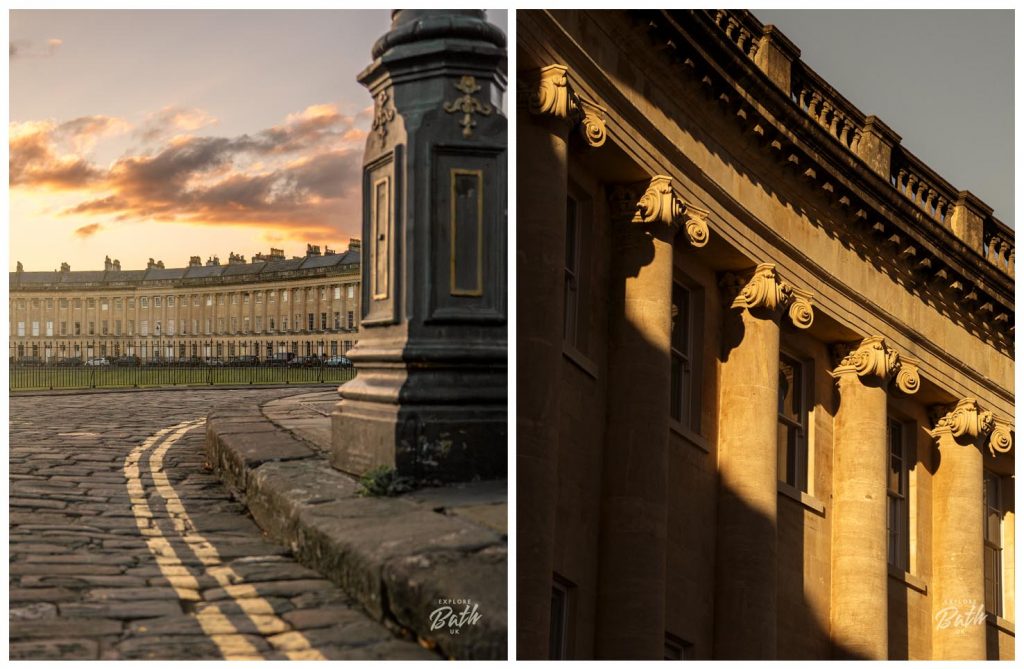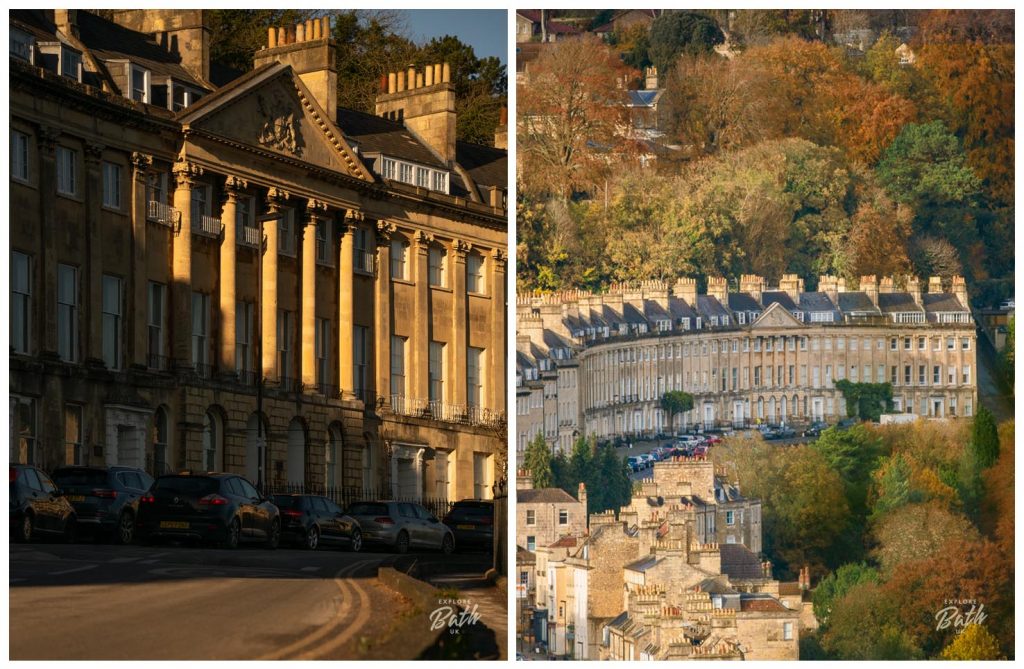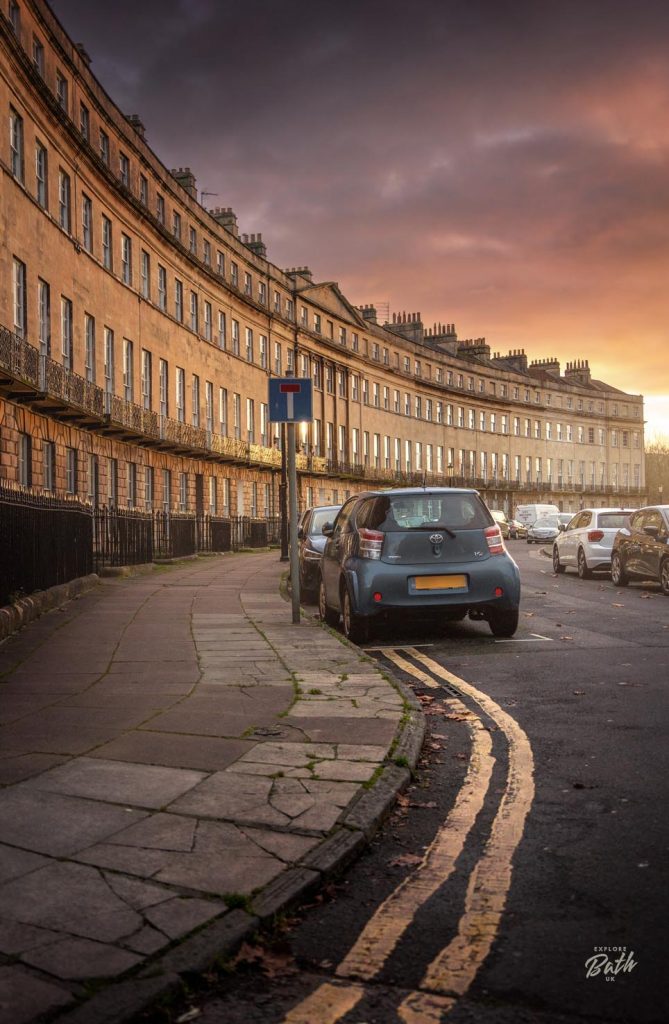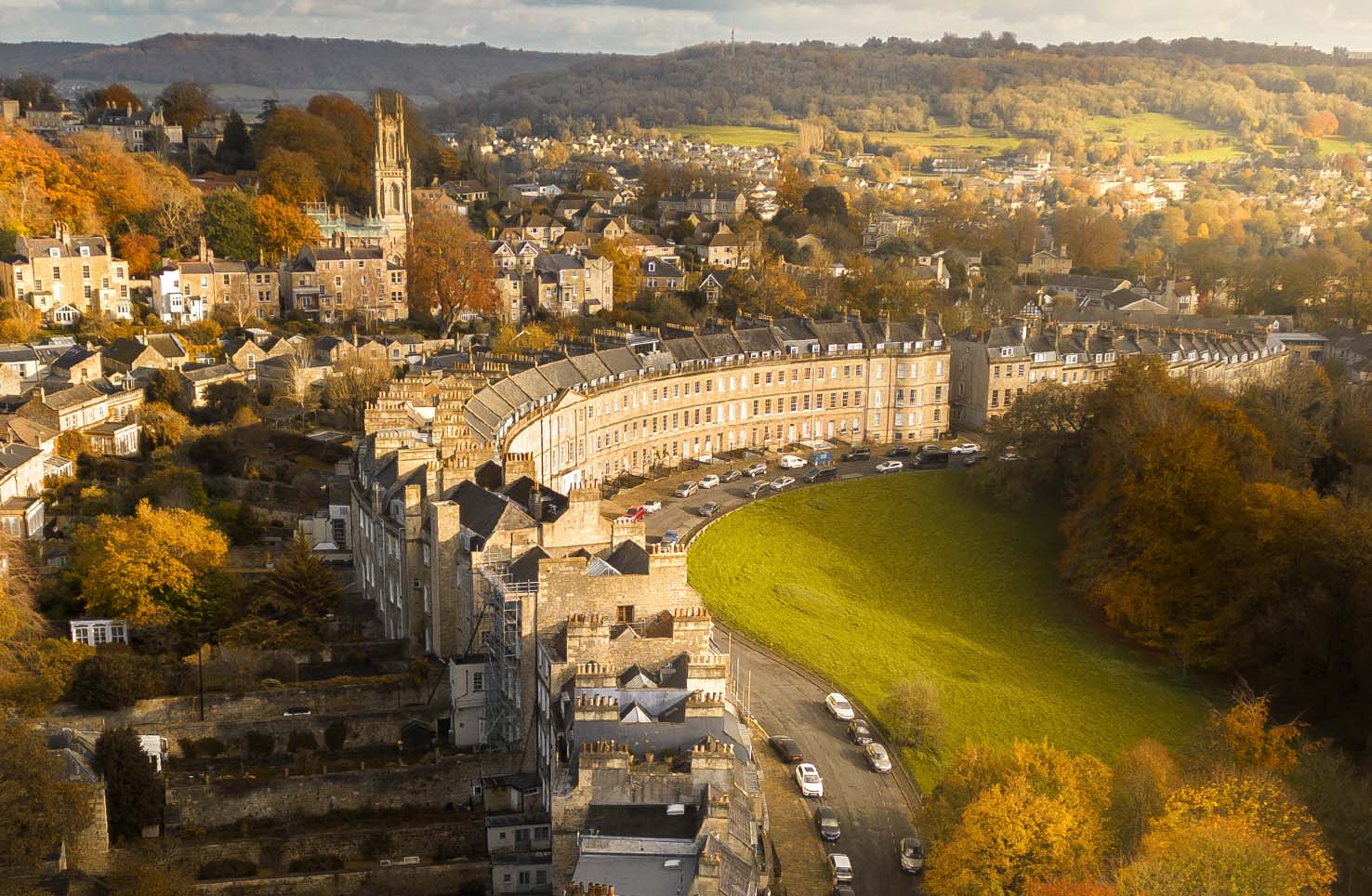The city of Bath is famous for its stunning Georgian architecture, and nowhere is this more evident than in its crescents, the gracefully curved terraces of townhouses that define a large part of the city’s historic appeal. While the Royal Crescent is the most well known, Bath is home to several crescents, each with its own unique character and history. The use of curved crescents in Georgian architecture symbolised a blend of social status, functionality, beauty and classical ideals, making it a hallmark of the period.
In this guide, we’ll explore all of Bath’s crescents, from iconic landmarks to hidden gems, uncovering their history, architectural beauty, and the best spots to admire them!
CONTENTS
- 1. Royal Crescent – The Iconic Landmark
- 2. Lansdown Crescent – The Quiet Beauty
- 3. Camden Crescent – The Panoramic View
- 4. Somerset Place – The Hidden Gem
- 5. Widcombe Crescent – The Overlooked Treasure
- 6. Norfolk Crescent – The Riverside Beauty
- 7. Cavendish Crescent – The Small but Perfectly Formed One
- Map of Locations
- Summary
1. Royal Crescent – The Iconic Landmark
The Royal Crescent is Bath’s most famous architectural masterpiece. Built between 1767 and 1775 by John Wood the Younger, this sweeping row of 30 terraced houses is a perfect example of Georgian design. Today, it remains one of the most photographed locations in the city (understandably so). It’s also a popular filming location with it most recently being featured in the Netflix series Bridgerton and ITV’s McDonald & Dodds. This landmark is also a must see destination in my article exploring Bath in one day. It’s also home to The Royal Crescent Hotel & Spa and No. 1 Royal Crescent, A Georgian townhouse exploring what life was like in Georgian Bath during the late 1700s
Why Visit?
• One of the finest examples of Georgian architecture in the UK
• Home to the Royal Crescent Hotel & Spa and No. 1 Royal Crescent Museum
• Stunning views over Royal Victoria Park
Location: Between Brock Street & Marlborough Buildings

2. Lansdown Crescent – The Quiet Beauty
Just a short walk uphill from the Royal Crescent, Lansdown Crescent is often overlooked but just as breathtaking. Designed by John Palmer in the 1790s, this crescent sits on an elevated position, offering stunning views of Bath.
Why Visit?
• Quieter than the Royal Crescent but just as elegant
• Close to Beckford’s Tower, another hidden gem
• Features a beautiful private green space in front
Location: Lansdown Place
3. Camden Crescent – The Panoramic View
Perched on a hillside, Camden Crescent offers one of the best views in Bath. Built in 1788 by John Eveleigh, this crescent originally had more houses, but some were lost due to landslips in the 19th century. The crescent’s elevated position makes it one of the best places to take in Bath’s skyline. Especially if you walk up St Stephen’s Road.
Why Visit?
• Amazing views looking down over the city
• A unique crescent with a slightly uneven shape due to historic landslips
Location: Camden Crescent

4. Somerset Place – The Hidden Gem
Tucked away from the main tourist areas, Somerset Place is a lesser known crescent with an interesting history. Built in the late 18th century, it suffered heavy bomb damage in World War II but has since been beautifully restored. Today, it’s a mix of private homes and apartments, making it a quieter, more residential spot.
Why Visit?
• A hidden gem, perfect for those looking to escape the crowds
• Gorgeous Georgian symmetry with a tranquil setting
• A great stop on the way to Lansdown Crescent
Location: Somerset Place, just off Sion Hill
5. Widcombe Crescent – The Overlooked Treasure
Across the river in the Widcombe area, this lesser-known crescent was built in 1808 and offers a peaceful escape from the city centre. Unlike the grand Georgian crescents of central Bath, Widcombe Crescent feels more like a hidden residential haven.
Why Visit?
• A quiet and underrated spot, away from the main tourist paths
• Stunning views over Bath’s southern hills
• A great place to see before heading to and exploring Widcombe
Location: Widcombe Hill
6. Norfolk Crescent – The Riverside Beauty
Unlike many of Bath’s crescents, which sit on hills or overlook parks, Norfolk Crescent enjoys a unique position near the River Avon. Built around the 1790s by John Palmer, this elegant Georgian terrace curves gently around a large open green, offering a more spacious feel compared to some of the city’s tighter crescents.
Why Visit?
• A peaceful riverside location with open green space
• Close to Green Park Station and walkways along the river
Location: Lower Bristol Road

7. Cavendish Crescent – The Small but Perfectly Formed One
Tucked away near Lansdown Crescent, Cavendish Crescent is one of Bath’s smallest and most exclusive crescents. Completed in 1830, it has just eleven elegant houses, making it more intimate and secluded than its grander counterparts. This crescent is all about quiet charm and symmetry.
Why Visit?
• One of Bath’s smallest and most exclusive crescents
• In the same area as Somerset Crescent
Location: Off Cavendish Road
Map of Locations
Summary
So there you have it – all of Bath’s crescents! From the famous Royal Crescent to hidden gems like Cavendish and Norfolk Crescents, each one has its own story. Whether you’re after history, architecture, or just a great photo, these elegant curves are worth exploring!




